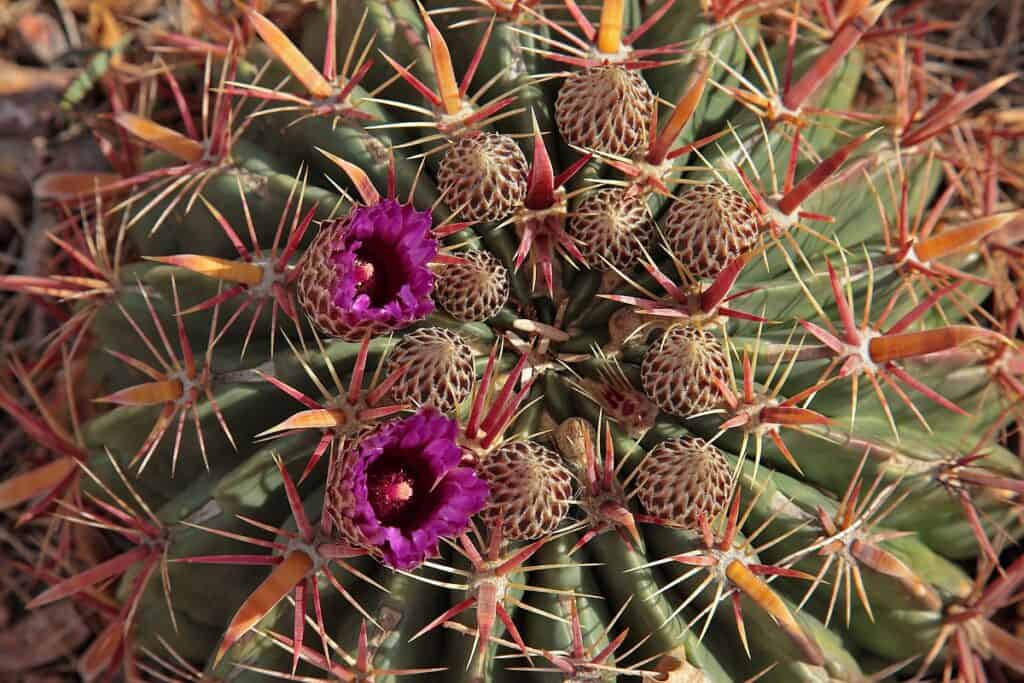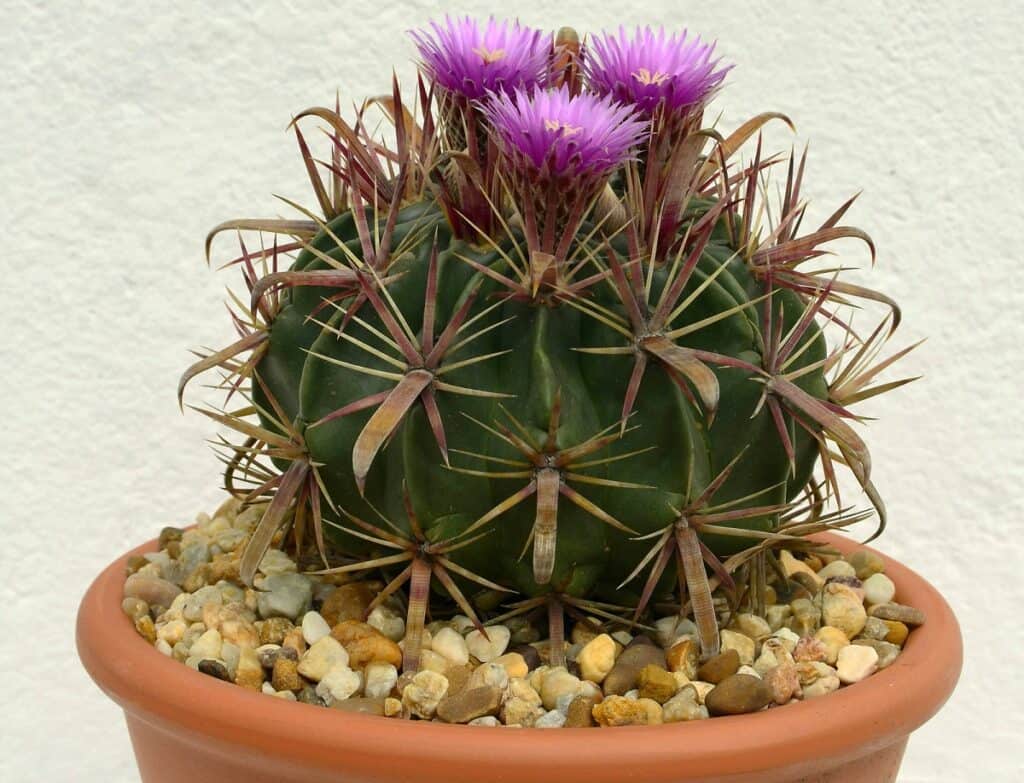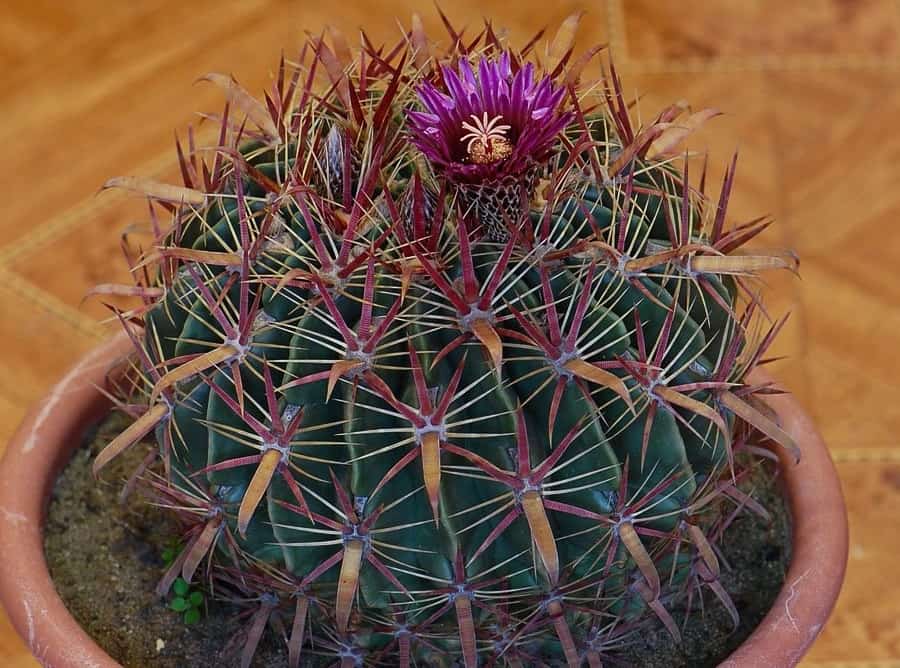Devilishly Beautiful: Mastering Ferocactus latispinus (Devil’s Tongue Cactus) Care
Imagine a cactus so eye-catching and unique, it will make your friends green with envy! The Devil’s Tongue Cactus, with its vibrant red-white spines and striking barrel shape, is a showstopper that demands attention. But don’t let its devilish name fool you – with the right care, this succulent beauty can thrive in your home for years to come. Get ready to master the art of keeping your very own Ferocactus latispinus happy and healthy!

Related Post:
44 Types of Ferocactus Cacti [With Pictures]
Contents
About the Devil’s Tongue Cactus
The Ferocactus latispinus, also known as the Devil’s Tongue Cactus, is a barrel cactus that grows into a large cylindrical stem around 12 inches tall. Its stem boasts about 20 ribs adorned with flattened, red-white central and radial spines. In fall and winter, this Mexican native produces beautiful purple and yellow flowers, adding to its exotic allure.
Ferocactus latispinus Care Requirements
Light
The Devil’s Tongue Cactus is a sun-worshipper! It craves plenty of direct sunlight to truly thrive. While some partial shade won’t kill it, you’ll need to keep the rest of its environment warm and toasty.
During those sunlight-scarce winter months, you may need to invest in grow lights and protect your prickly pal from frost and mist.
Water
Young Ferocactus latispinus need a little more water and TLC than their older counterparts. But in general, this cactus is a low-maintenance drinker. Thanks to its shape, it’s a pro at storing water and can go extended periods without any extra hydration.
Give it a good soak during the growing season from spring to fall. But once winter rolls around and temperatures drop, cut back on watering significantly.
A good rule of thumb: only water when the top few inches of soil are completely dry. Soggy soil can spell disaster for your Devil’s Tongue.

Soil
Well-draining soil is key for the happy Devil’s Tongue Cactus. Make sure the pot has plenty of drainage holes at the bottom to allow excess moisture to escape. A regular cactus soil mix should do the trick. Or get creative and make your own by combining 45% pumice, 40-45% compost and sand.
For an extra desert-y touch (and a prettier planter), add some decomposed granite and pebbles around the pot to mimic this cactus’ natural habitat.
Fertilizing
Here’s some low-maintenance good news – the Devil’s Tongue doesn’t need much in the way of fertilizer! It grows happily in low-nutrient areas. But for an extra growth boost, you can fertilize once yearly before the growing season with a low-nitrogen cactus fertilizer.
Climate
As a desert dweller, the Ferocactus latispinus thrives in dry, arid climates. It’s no fan of frosty temps, so creating warm desert-like conditions is a must if you want this prickly pal at home.

How to Propagate the Devil’s Tongue Cactus
Multiplying your Ferocactus latispinus collection is a breeze! Just follow these simple steps:
- Prep a well-draining soil mix using sand, perlite, compost and a tiny pinch of fertilizer. Or use a cactus potting mix.
- Snip off a small cutting from the main cactus stem and pop it into the soil.
- Keep the soil lightly moist and wait patiently – these slow growers take their time!
After propagating, hold off on watering for 1-2 weeks to mimic the cactus’ arid origins. And go easy on the sunshine at first with just partial shade or bright, indirect light.
While seeds can work too, cuttings are usually the easier route for multiplying your devilishly beautiful collection!
